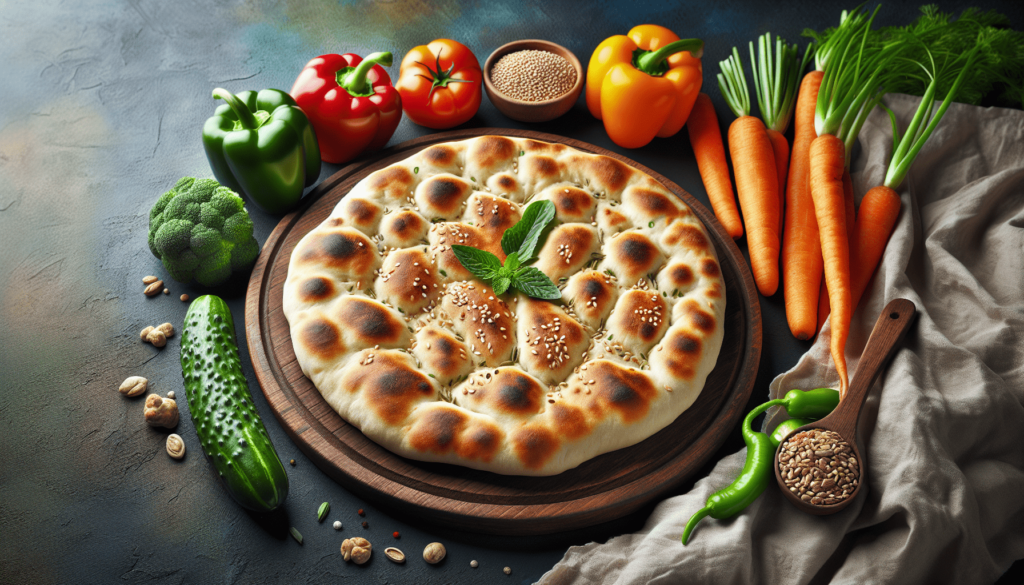Is Naan Bread Healthy For Diabetics?
Are you a diabetic who loves Indian cuisine? Naan bread is a popular choice in Indian restaurants, but is it a good option for you? Let’s explore if naan bread is a healthy choice for diabetics.
Understanding Naan Bread
Naan bread is a type of flatbread that is commonly consumed in Indian cuisine. It is typically made from white flour, yeast, yogurt, and sometimes butter. Naan bread is cooked in a tandoor, a traditional clay oven, which gives it its distinctive charred and bubbled appearance.
Naan bread is usually served warm, brushed with ghee or butter, and can be plain or stuffed with various ingredients such as garlic, cheese, or herbs. It is a staple at most Indian restaurants and is often enjoyed with curries, kebabs, or as a standalone snack.
Nutritional Composition of Naan Bread
Let’s take a closer look at the nutritional content of naan bread. One typical serving of plain naan bread (about 100 grams) contains approximately:
- Calories: 300
- Protein: 8 grams
- Carbohydrates: 50 grams
- Fat: 6 grams
- Fiber: 2 grams
Naan bread is high in carbohydrates due to its main ingredient being white flour. The addition of fats like butter or ghee also contributes to its calorie content. When consumed in moderation, naan bread can be a tasty addition to a meal.
How Carbohydrates Affect Blood Sugar Levels
Carbohydrates are broken down into glucose (sugar) in the body, which is then utilized for energy. For diabetics, monitoring carbohydrate intake is crucial to managing blood sugar levels effectively. Foods that are high in carbohydrates, like naan bread, can cause spikes in blood sugar levels if not consumed mindfully.
The Importance of Portion Control
When it comes to managing diabetes, portion control is key. While naan bread can be enjoyed occasionally, it is important to be mindful of serving sizes. Opting for smaller portions or sharing a serving with others can help regulate carbohydrate intake and prevent blood sugar spikes.

Health Considerations for Diabetics
As a diabetic, it is essential to prioritize foods that are low in added sugars, refined carbohydrates, and saturated fats. Let’s discuss how naan bread fits into a diabetic-friendly diet.
Managing Carbohydrate Intake
Since naan bread is high in carbohydrates, it is important to balance it with other low-carb options in your meal. Pairing naan bread with protein-rich foods like lentils, chickpeas, or grilled chicken can help slow down the absorption of glucose and prevent blood sugar spikes.
Choosing Whole Grain Alternatives
Opting for whole grain naan bread instead of the traditional white flour variety is a healthier choice for diabetics. Whole grains contain more fiber, vitamins, and minerals compared to refined grains, making them a more nutritious option.
Adding Nutrient-Dense Ingredients
To enhance the nutritional profile of your naan bread, consider adding nutrient-dense ingredients like seeds, nuts, or whole grains to the dough. This can increase the fiber and protein content of the bread, making it a more satisfying and balanced choice for diabetics.
Tips for Enjoying Naan Bread Mindfully
While naan bread may not be the most diabetes-friendly option, there are ways to enjoy it mindfully without compromising your health goals. Here are some tips for making naan bread a part of your diet in a sensible way.
Limiting Frequency of Consumption
Instead of having naan bread daily, reserve it for special occasions or as an occasional treat. This allows you to savor the flavors of naan bread without overindulging in its high carbohydrate content.
Watching Portion Sizes
When enjoying naan bread, be conscious of portion sizes. Consider sharing an order with a friend or only eating half of a serving to keep your carbohydrate intake in check. Remember, moderation is key.
Balancing Your Meal
To balance out the high carbohydrate content of naan bread, pair it with fiber-rich vegetables, lean proteins, and healthy fats. Creating a well-rounded meal can help slow down digestion and minimize blood sugar fluctuations.
Homemade Naan Bread Options
If you enjoy cooking, consider making your own naan bread at home using whole grain flour, yogurt, and minimal added fats. This allows you to control the ingredients and customize the recipe to suit your dietary needs.

Final Thoughts
In conclusion, while naan bread may not be the most diabetes-friendly option due to its high carbohydrate content, it can still be enjoyed in moderation as part of a balanced meal. By being mindful of portion sizes, choosing whole grain alternatives, and pairing naan bread with nutritious ingredients, you can include this traditional Indian bread in your diet sensibly.
Remember, managing diabetes is all about making informed choices and finding a balance that works for you. With a bit of planning and mindfulness, you can still enjoy the flavors of naan bread while prioritizing your health and well-being. Here’s to savoring the culinary delights of Indian cuisine responsibly and deliciously!


